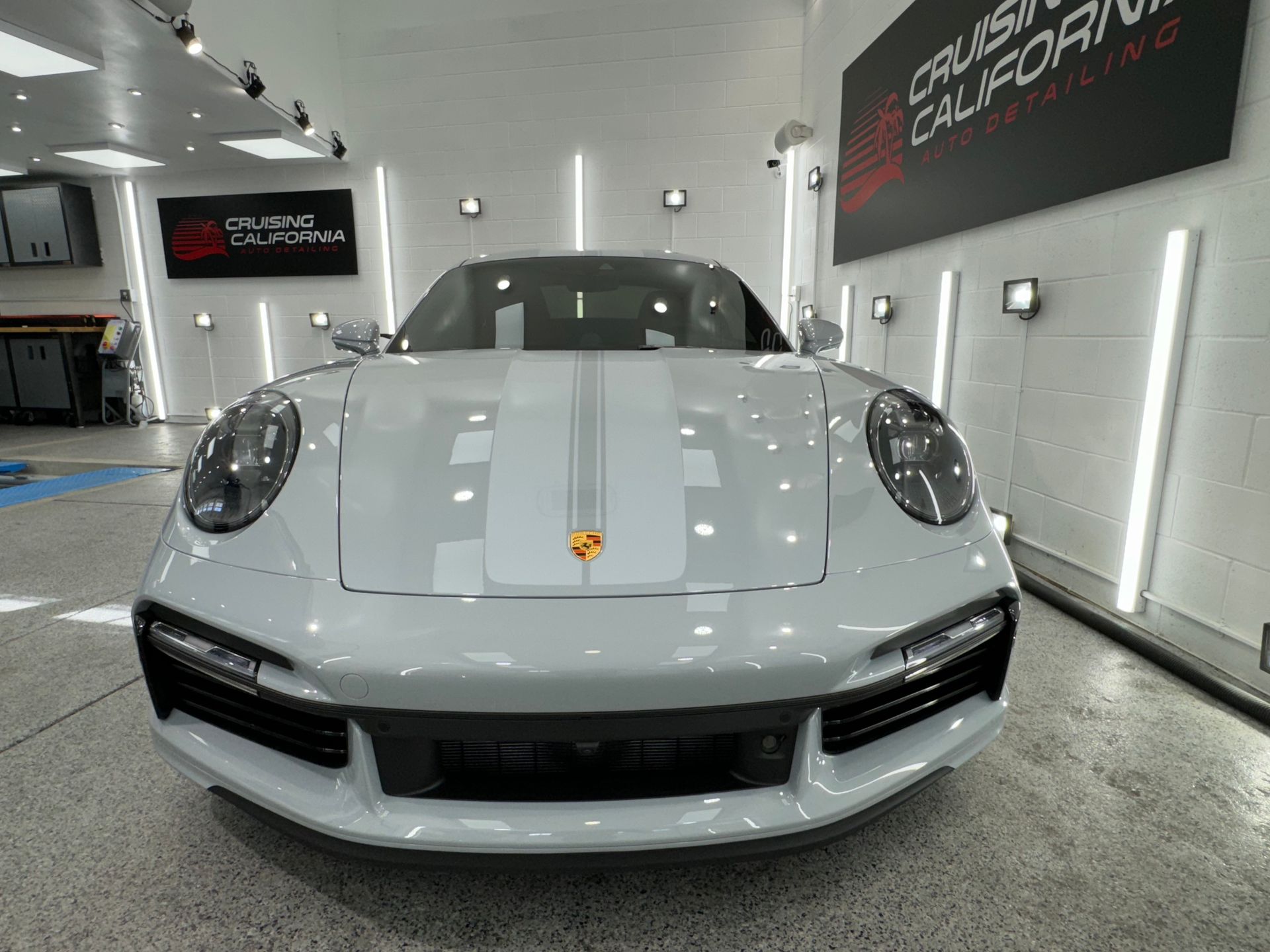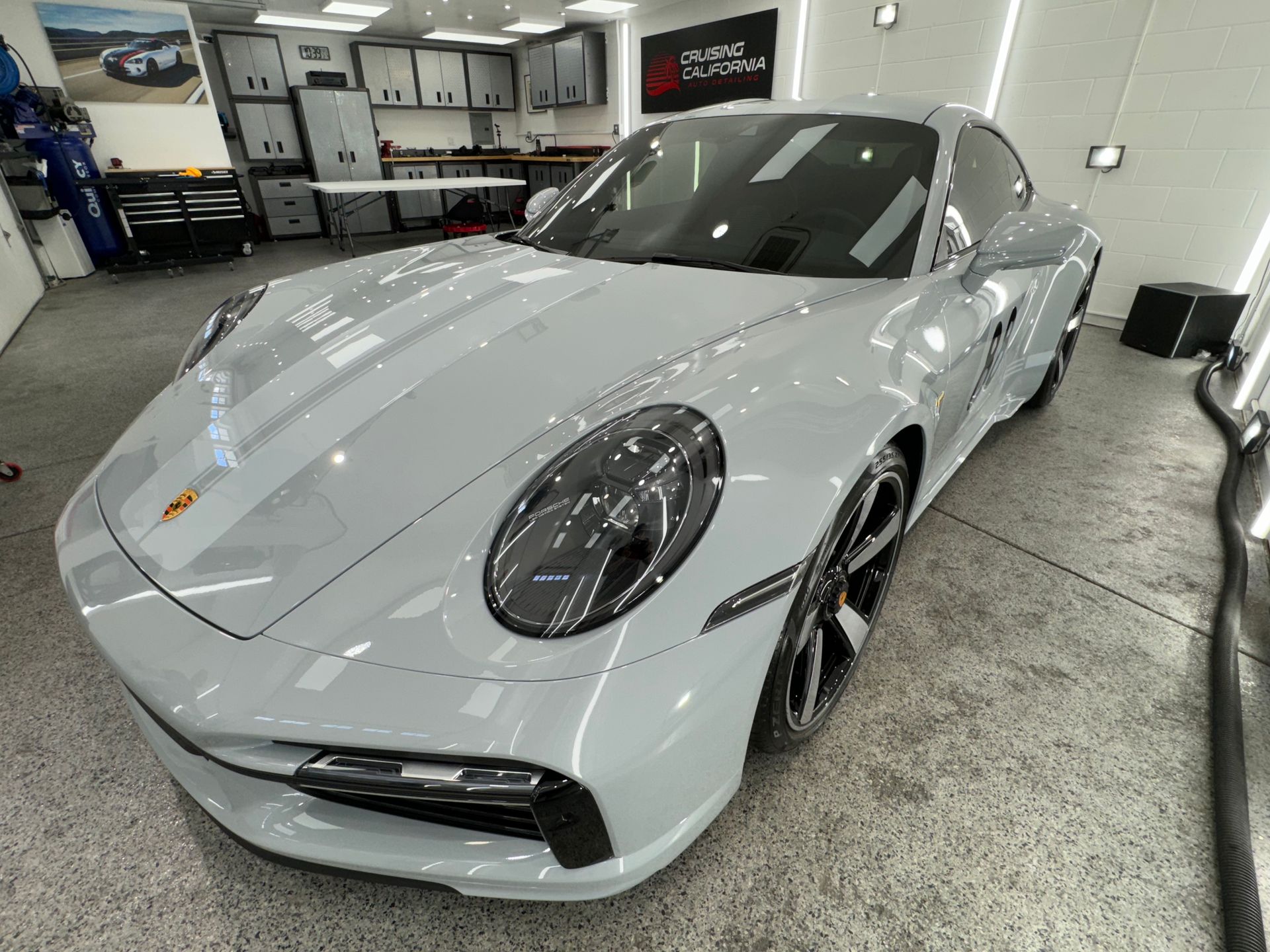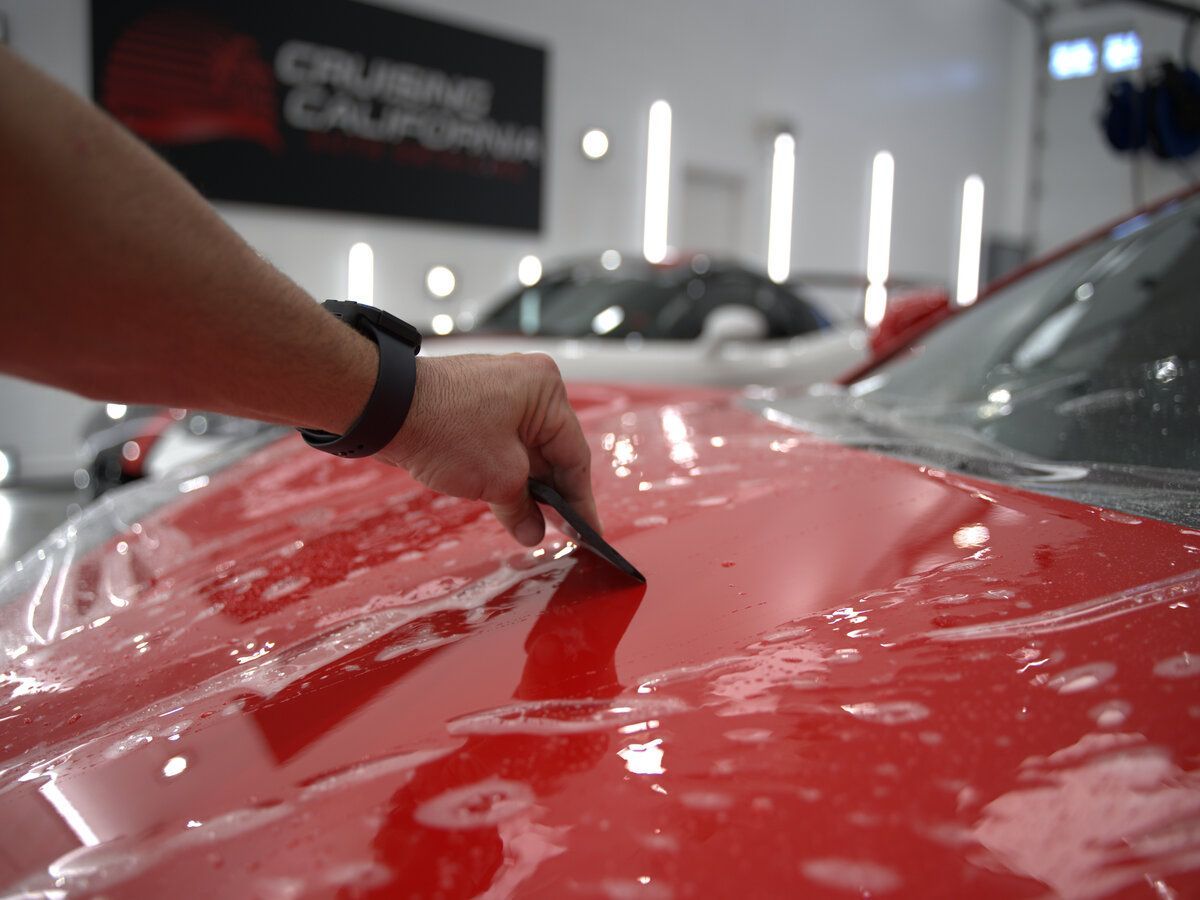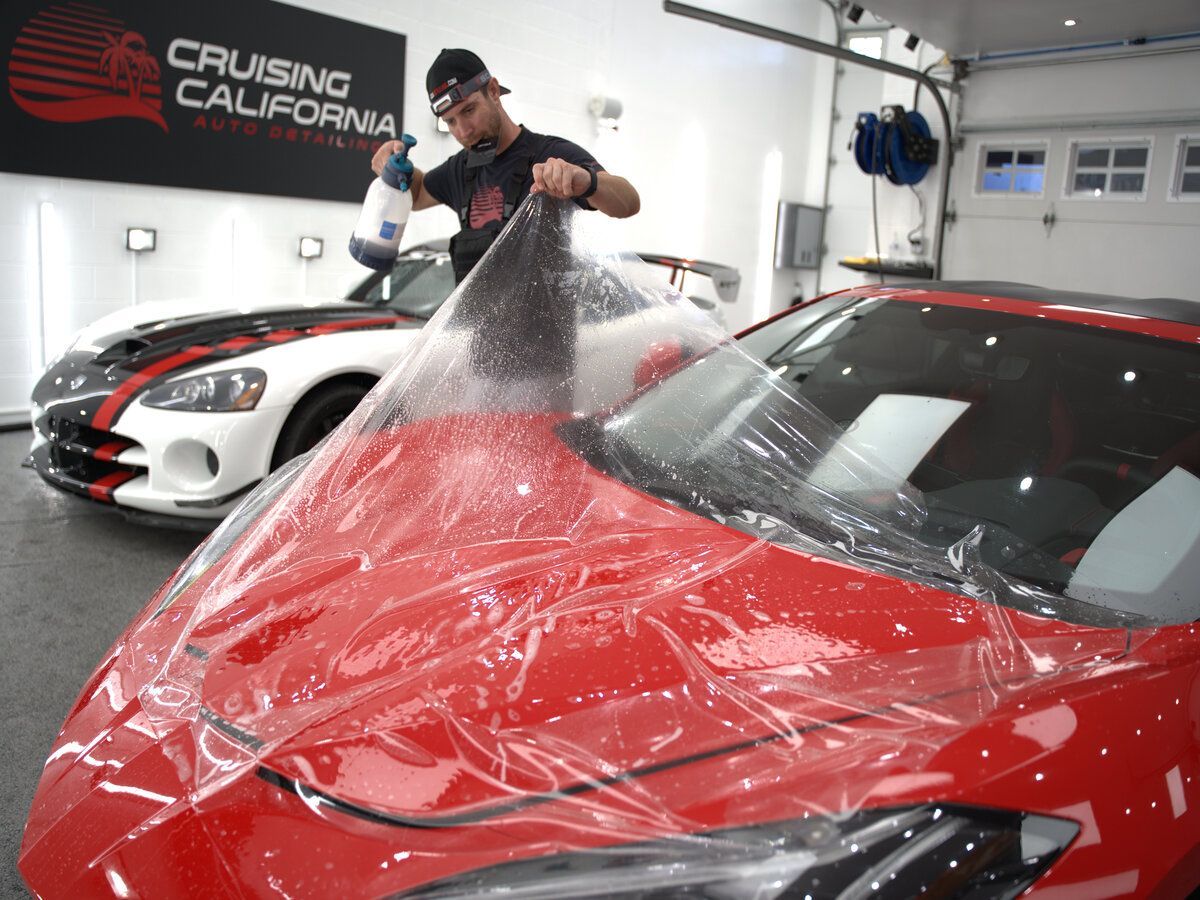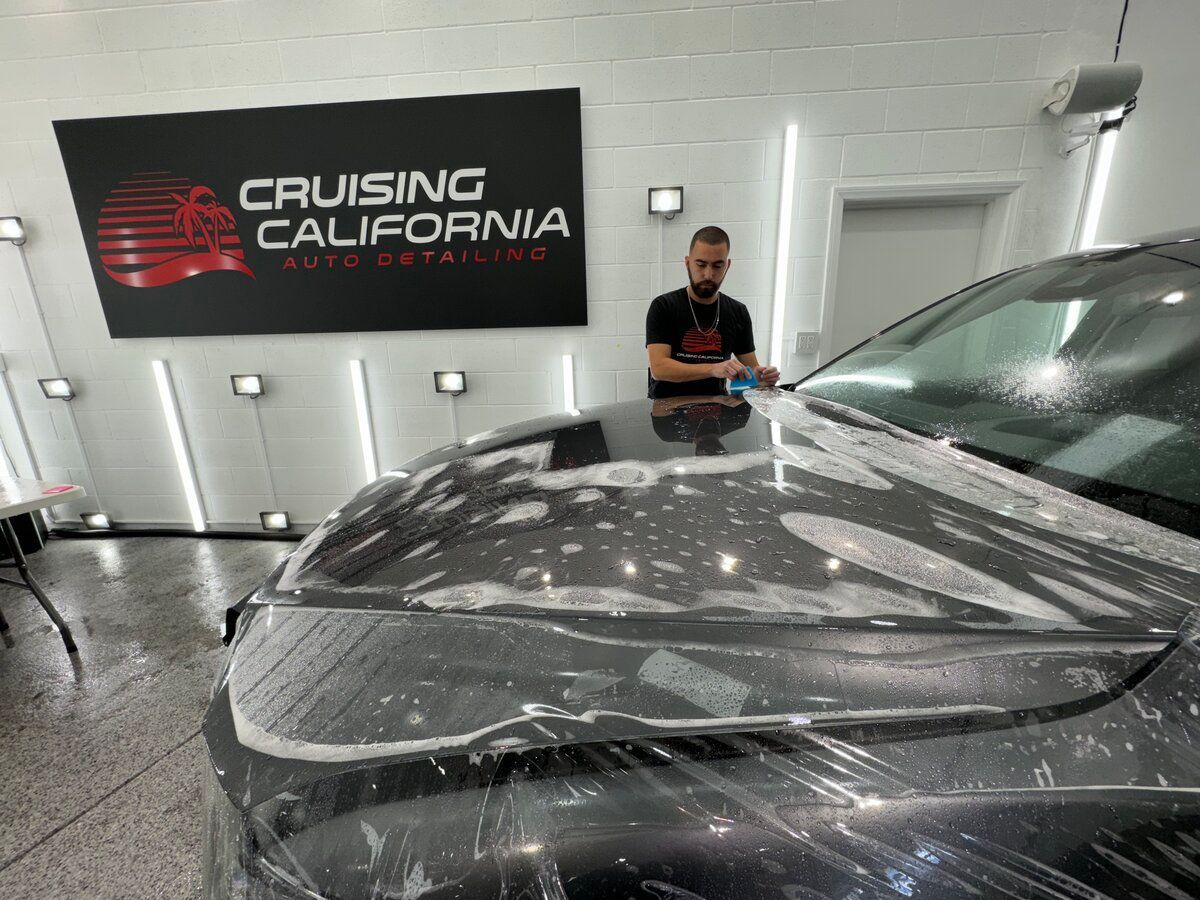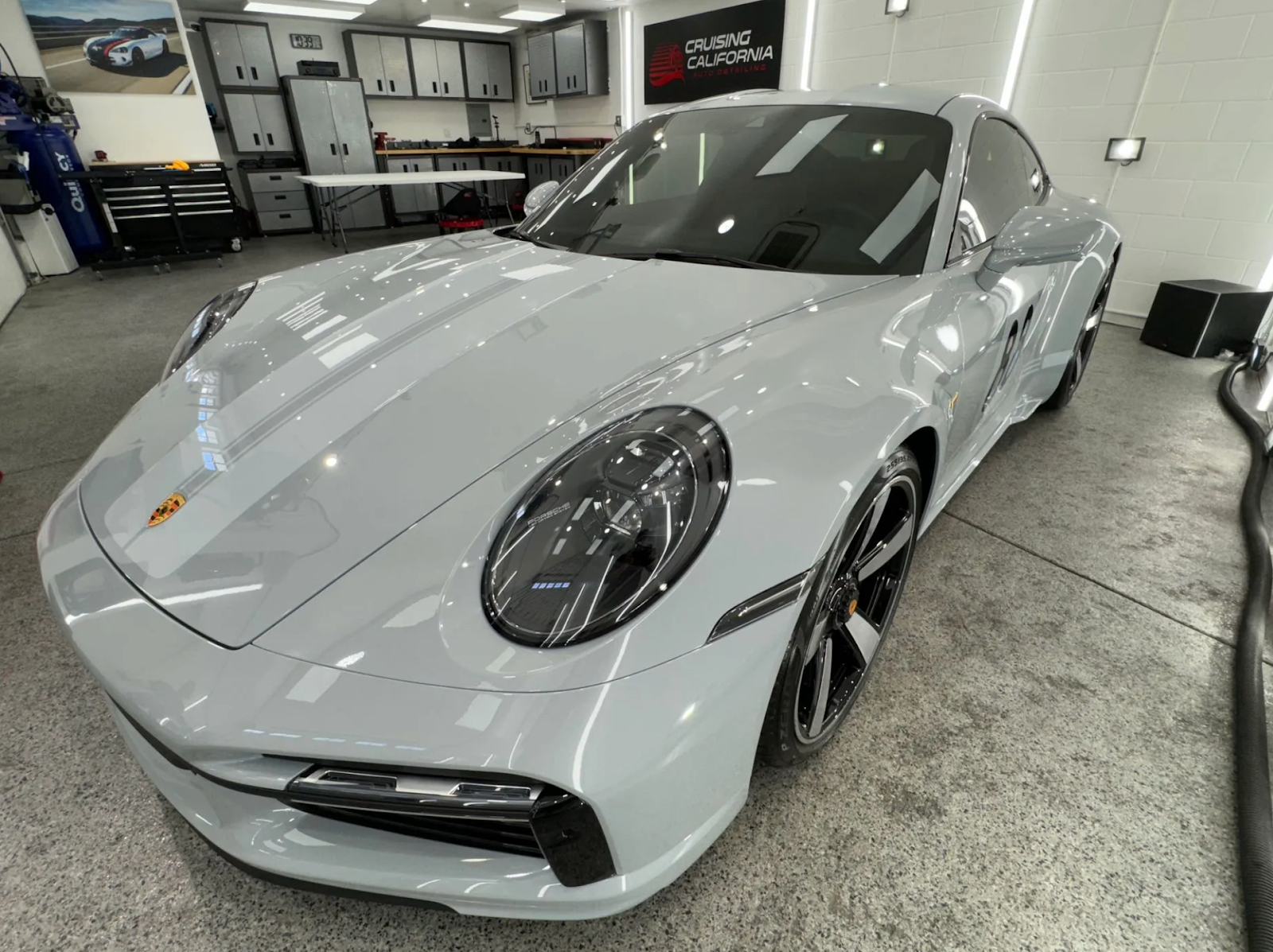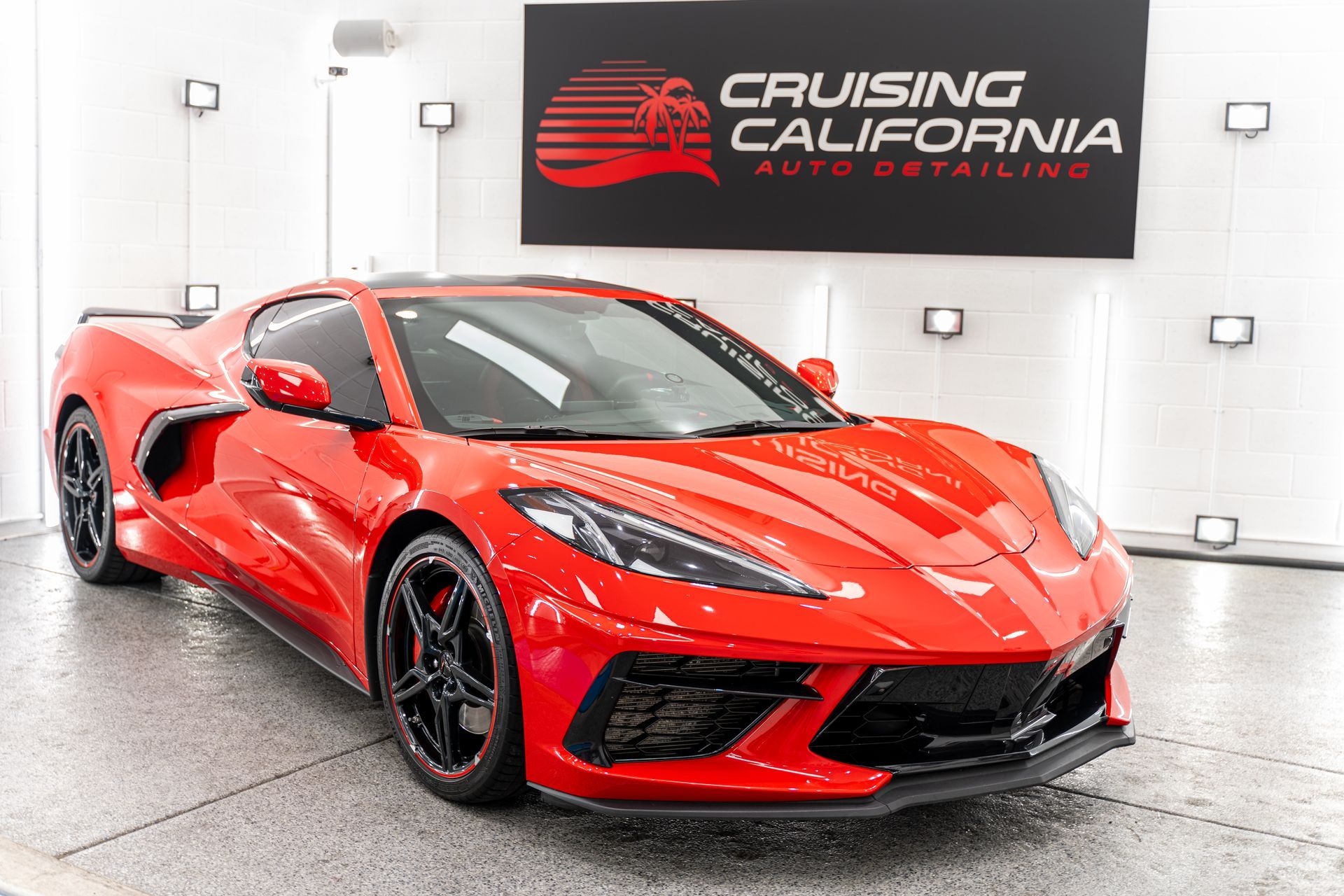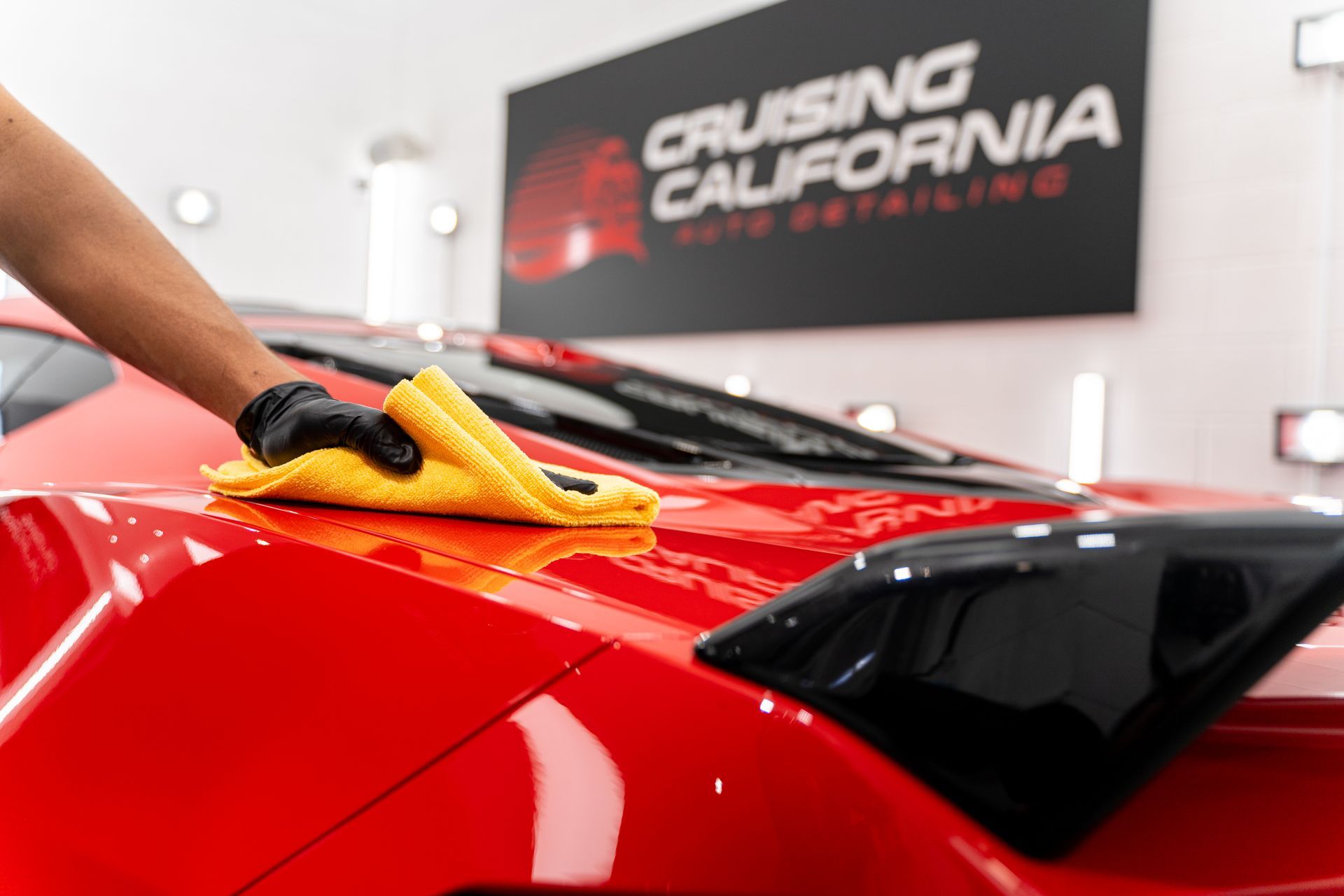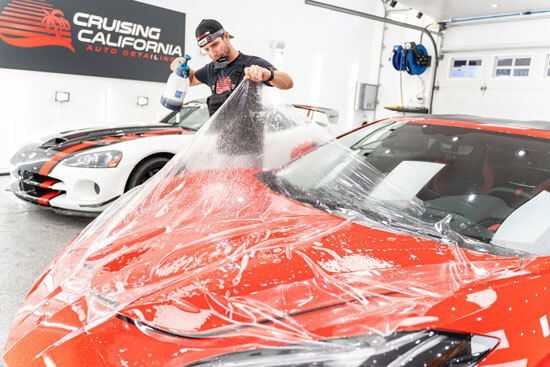Comparing DIY vs. Professional PPF: Pros and Cons for Optimal Car Protection
Choosing between a DIY paint protection film installation and hiring a professional service is no small decision for any car enthusiast. Protecting your beloved vehicle’s paintwork is essential, not only for preserving its aesthetic appeal but also for maintaining its resale value. Even minor scratches or chips can significantly impact both, and while tackling a DIY project can save money upfront, it demands precision, patience, and skill.
The decision between DIY and professional PPF installation hinges on factors like cost, time, skills, and quality. While DIY may offer cost savings and a learning opportunity, professional installation assures high-quality products, expertise, and precision, leading to superior results. Consider your budget, time availability, and level of expertise before making a decision.
DIY Paint Protection Film Application
When you purchase a DIY PPF kit, you'll receive all the necessary tools, such as squeegees, precision knives, and spray bottles. These are essential for ensuring proper alignment and adhesion of the film to your vehicle. Additionally, many kits come with detailed installation instructions to guide you through the entire process. It's important to take the time to go over these instructions thoroughly before beginning. The squeegee is vital for smoothing out the film and removing air bubbles, while precision knives allow for accurate trimming around curves and edges. The spray bottles typically contain a slip solution, usually a mixture of soap and water, which aids in applying the film smoothly without leaving any residue or bubbles.
Costs, Time, and Skills Required
When considering DIY paint protection film application, several key factors come into play. A typical DIY kit can range from $100 to $500, varying based on the film quality and the vehicle's coverage area.
- Time Commitment: The financial investment is often at the forefront of consideration, but the significant time commitment required for a successful DIY PPF installation is frequently overlooked. It's not just about applying the film; there's a substantial learning component involved. For first-timers, getting it right requires investing hours in learning proper techniques, understanding the tools required, and comprehending the intricacies of working with paint protection film. Moreover, the installation itself can be quite time-consuming. Depending on the vehicle size and the installer's experience level, the PPF installation can take anywhere from 6 to 12 hours - essentially a full day’s work!
- Skills Required: Embarking on a DIY paint protection film project necessitates a specific set of skills. Precision is paramount - a steady hand, attention to detail, and a good eye for measurements are vital for accurately cutting and smoothly applying the film without any unsightly bubbles or imperfections. In addition to precision, patience is an absolute necessity. Applying a paint protection film is meticulous work that demands diligence and composure. Rushing through the process can lead to mistakes that compromise the film's effectiveness in protecting your vehicle's finish.
So, before plunging into a DIY PPF installation, it's crucial to assess whether you have both the time and these essential skills at your disposal. While it can be fulfilling for hands-on enthusiasts, these factors are pivotal considerations before committing to this method.
Professional PPF Application
Opting for professional paint protection film installation brings with it an array of advantages that go beyond what a DIY application can offer. The seamless integration of surface preparation, meticulous film application, and post-application care defines the comprehensive nature of professional services. This ensures that every step is executed with precision and expertise, producing a result that's both durable and visually appealing.
One of the most compelling aspects of a professional PPF application is the unparalleled expertise that accompanies it. Certified installers undergo rigorous training and certification to master the intricate installation techniques involved in applying paint protection films. This expertise not only ensures the highest quality of work but also gives car owners peace of mind, knowing that their vehicle is in the hands of trained professionals. Imagine entrusting your beloved car to professionals who have spent years perfecting their craft. These experts are well-versed in handling various types of vehicles and are equipped with the knowledge to cater to each car's specific needs. This expertise translates to a level of precision and finesse in installation that isn't easily achievable through a DIY approach.
On top of expertise, professional paint protection film application presents a significant convenience factor that sets it apart from DIY installation. The time-saving aspect alone is a major draw for many car owners. What might take an amateur 10 hours or more can be expertly completed by a professional installer in 3-4 hours. This remarkable difference in time investment underscores the proficiency and efficiency brought by professional paint protection film applications. Beyond the core installation process, professional PPF services often offer warranties and maintenance packages as part of their offerings. These additional services provide invaluable peace of mind for car owners by ensuring long-lasting protection and addressing any potential issues that may arise after the installation.
Imagine driving away from a professional PPF installation with not just a pristine finish but also a comprehensive warranty that safeguards your investment. Any concerns about the film's durability or performance are addressed by the dedicated maintenance packages offered by these services, further solidifying the sense of security that comes with professional paint protection film application. The blend of expertise, time-saving efficiency, and additional services makes professional paint protection film applications an enticing option for car owners seeking optimal protection for their vehicles.
Quality Differences
When it comes to quality differences in paint protection film installations, several key factors set professional applications apart. Let's start with film quality.
- Film Quality: Professionals have access to a wide range of film brands, including premium options. These high-end films may not be readily available in standard DIY kits. By utilizing these top-tier materials, professional installers can offer a level of protection that surpasses what's achievable with standard consumer-grade kits.
- Premium Options: What distinguishes premium paint protection film is their advanced technology, which provides enhanced protection against environmental elements and wear-and-tear. This includes resistance to discoloration, yellowing, and surface degradation over time. The exceptional clarity of these films also ensures that the vehicle's paintwork remains vibrant and unobscured.
- Installation Precision: The expertise and experience that professional installers bring into play cannot be overstated. Their familiarity with intricate application techniques and specialized tools ensures that the film is applied seamlessly without any bubbles or imperfections. This results in a smooth, durable finish that provides comprehensive protection for the underlying paintwork.
- Expertise: Professional installers undergo extensive training to perfect precision techniques that enable flawless film application. The skillful manipulation of the film around complex contours and edges requires a level of expertise that is refined through years of practice. This precision not only impacts the visual appeal but also contributes to the film's overall longevity.
- Longevity and Durability: The durability of professionally installed paint protection films tends to exceed that of DIY applications due to various factors emanating from both installation precision and the quality of materials used. The meticulous attention to detail exercised during professional installations directly translates into enhanced durability. The seamless integration with the vehicle's contours ensures that there are no weak spots where environmental hazards can penetrate.
Additionally, due to the use of top-quality materials, including those with self-healing properties, the film is capable of maintaining its protective capabilities even after prolonged exposure to varying weather conditions. Consider situations where road debris occurs. With professionally installed paint protection film, its ability to absorb and disperse this impact efficiently minimizes potential damage to the underlying paintwork—a level of protection that surpasses what could typically be achieved through a DIY application.
While DIY installations offer cost savings and hands-on learning opportunities, it's essential to recognize how professional installations leverage expertise, specialized tools, and high-quality materials to deliver unparalleled results in terms of film quality, precision application, and long-lasting durability. Understanding the nuances between DIY and professional PPF installations illuminates the decision-making process when it comes to safeguarding your vehicle's exterior.
Pros and Cons for DIY vs. Professional
When it's time to shield your car with a protective PPF layer, whether through a DIY installation or professional services, each method carries its own unique set of advantages and drawbacks. Here's a closer look at what you can expect from both options:
DIY PPF Pros
One of the most appealing aspects of a DIY approach is the potential to save a significant amount of money on labor fees. Opting for a DIY installation can translate to savings ranging in the hundreds of dollars compared to the relatively higher cost of professional services. Crafting your own schedule, setting the pace for each step, and taking breaks whenever necessary is another key advantage associated with a DIY installation. This flexible nature allows you to tailor the project according to your availability, without being constrained by service provider schedules.
DIY PPF Cons
While performing a PPF installation independently offers certain freedoms, there is also an undeniable risk of mistakes that could impact the final finish. Common errors such as misalignment, bubbles, or dirt becoming trapped under the film may compromise the overall quality of the protective layer. Additionally, DIY installations usually lack warranty coverage, putting any rectification costs stemming from errors squarely on your shoulders. In contrast, professional services often include comprehensive warranties that offer peace of mind and financial protection against potential defects.
Professional PPF Pros
Entrusting your car to experienced professionals who utilize specialized tools and possess extensive expertise often ensures a higher-quality finish. They are well-versed in the nuances of paint protection film application and are equipped to deliver a meticulously precise result. One of the pivotal benefits accompanying professional installations is the availability of comprehensive warranties that safeguard both the film itself and the installation process. This added layer of protection grants reassurance against unforeseen issues arising post-installation.
Professional PPF Cons
In comparison to DIY endeavors, professional installations typically entail a considerably higher upfront cost, with estimates ranging from $500 to $2,000 or more. This initial investment must be weighed against the potential long-term benefits offered by professional-grade precision and warranty coverage. Effectively coordinating an appointment with a professional service might necessitate planning ahead and arranging for alternative transportation during the period when your car will be in their care. The scheduling aspect demands additional consideration, especially for those with packed daily agendas.
The decision-making process between DIY and professional paint protection film installations is intricate and involves careful considerations. As you weigh these factors, it's crucial to understand how they align with your preferences and resources to find the optimal path forward.
Choosing the Right Option for You
The decision between going the DIY route or hiring a professional for your car's paint protection film installation ultimately boils down to your specific needs and circumstances. Let's examine a few key factors to help guide you through this decision.
- Assessing Your Budget: When making a significant decision like this, it's essential to start with your budget. DIY kits are generally less expensive upfront, but the potential for mistakes may lead to additional costs in the long run if professional correction is required. On the other hand, professional installations come with a higher initial cost but are backed by experience and expertise, minimizing the risk of errors that could result in costly rework.
- Time Availability: Consider how much free time you have on your hands. Installing a paint protection film can be time-consuming, especially if you're a first-timer. Depending on your schedule and lifestyle, you may find that the convenience of having professionals handle the installation is worth the additional expense.
- Skill Level: Think about your comfort level with intricate tasks. While some people enjoy tackling DIY projects, others may feel apprehensive about handling something as delicate as an automotive protective film. It’s crucial to accurately assess your capability to follow detailed instructions and execute precise work. If you're not confident in your abilities or don't have experience with similar tasks, opting for professional installation could save you from potential frustration and subpar results.
- Desired Quality: Consider what level of quality and finish you're aiming for. Professional paint protection film installers have access to advanced equipment and techniques that can ensure flawless application and high-end finished results. If achieving a seamless, factory-like appearance is a top priority, investing in professional installation might be a better choice for you.
Exceptional PPF Installers in El Cajon, CA
Give your vehicle the ultimate protection with CCA Detailing & Ceramic Coating | PPF,
exceptional paint protection film installers in El Cajon, CA. Our expert team specializes in applying premium paint protection film that safeguards your car against scratches, chips, and other damage, ensuring it stays in top condition. With meticulous attention to detail and a commitment to using the best materials, CCA Detailing & Ceramic Coating | PPF delivers unmatched service and results. Trust us to enhance your car's durability and appearance. Contact us today to schedule your PPF installation and experience unparalleled vehicle protection. Call us at
(619) 916-6157 to get started!

